Download the EU relative risks bubble chart as a PDF / data sources as a PDF
Download the EU relative risks bar chart as a PDF / data sources as a PDF
Save the pictures within this news item to your computer so that you can spread them yourself via Twitter, Facebook and other social media networks.
Following ANH-Intl’s release last month of UK data on some key causes of death, we’re now in a position to release data sourced from across Europe. These data, drawn from official European Union (EU) sources, reveals once more that natural health products are among the safest things we put into our bodies – confirming the UK data. The new figures show that EU hospitals are not only hundreds of thousands of times more likely to cause death than natural health products – they are twice as deadly as either cancer or smoking. So why are natural products under threat for ‘posing a risk to public safety’?
Casting the net wider
Just a few short weeks ago, we brought you exclusive data proving what natural health advocates have said all along: that products associated with natural forms of health management are among the safest substances that human beings put into their bodies. Compelling as they were, however, those data were for the UK only. Now we cast the net wider and bring you a comparable analysis using EU-wide data. And the new information paints a picture that is just as stark.
Figure 1. EU relative risks of death bubble chart (click on image to open as a PDF, or save to your computer)
Figure 2. EU relative risks of death bar graph (click on image to open as a PDF, or save to your computer)
Exactly as with the UK data, the EU figures display the relative risks of death to an individual for a range of activities. A larger bubble on the bubble chart (Figure 1) represents a proportionately larger risk of death, as does a longer bar on the bar graph (Figure 2). Risk of death from food supplements has been assigned a value of 1 to allow calculation of the relative risk from other sources.
The same clarifications apply here as to the UK data. The data only include risk of death from acute causes, and not from chronic, long-term exposure to any of the substances or activities we investigated. Also, the charts don’t include any data on adverse events that do not lead to death, i.e. sublethal acute effects. Where possible, all data are taken from official EU sources.
The data were collated and presented by Ron Law, an independent New Zealand-based risk management consultant.
Key points and comparison with UK data
| EU relative risk of death data | UK relative risk of death data |
| Preventable medical injury in EU hospitals poses the greatest risk of death to EU citizens – some 351,220 times the risk of consuming food supplements, and 206,600 times the risk posed by herbal medicines | Preventable medical injury picked up during a stay in a UK hospital is 293,006 more likely to kill a UK citizen than taking a food supplement |
| EU-wide, the risk of death from both smoking and cancer is around 173,000 times that of taking food supplements. Therefore, a hospital visit is over twice as likely as either smoking or cancer to take the life of an EU citizen | Smoking is the riskiest activity for UK citizens, at 797,940 times the risk of taking a food supplement |
| EU citizens taking pharmaceutical drugs run a risk of death from side effects that is 123,125 greater than the mortality risk experienced through taking a food supplement. Comparing pharmaceuticals with herbal medicines, meanwhile, the relative risk of death is multiplied 72,426 times | The risk of death from pharmaceutical drugs in the UK is 62,000 times that of taking food supplements |
| Food supplements and herbal medicines are ‘supersafe’, with a risk of death below 1 in 10 million EU-wide | Food supplements and herbal medicines are ‘supersafe’, with a risk of death below 1 in 10 million in the UK |
| Preventable medical injuries in EU hospitals are in the ‘dangerous’ category of risk, i.e. a greater than 1 in 1,000 chance of death. Also in this category are adverse pharmaceutical drug reactions, smoking, cancer, illicit drug use and overweight/obesity | Preventable medical injuries in UK hospitals are in the ‘dangerous’ category of risk, i.e. a greater than 1 in 1,000 chance of death. The only activities with a similar level of risk are active military service in Iraq or Afghanistan and smoking |
| In the EU, pharmaceutical adverse drug reactions pose double the risk of death compared with lung cancer | Someone having a motorcycle accident in the UK is around half as likely to die as someone who has an adverse reaction to a pharmaceutical drug |
| The closest comparisons with food supplements or herbal medicines, in terms of risk of death in the EU, are with lightning strikes and passengers who experience railway or aeroplane accidents. However, they are still 26–68 times more likely to result in death than taking food supplements | UK residents are about as likely to be hit by lightning or to be killed on the London Underground than to die from taking herbal remedies or dietary supplements |
A blatant lie
These figures emphasise once again that the public safety-based justification given by European regulators and governments for increasingly restrictive legislation on ingredients and health claims for natural products is hollow.
If the authorities were genuinely interested in public safety, they would be promoting natural healthcare for all it’s worth, while clamping down on the many dubious aspects of mainstream medicine – starting with its over-reliance on poorly tested, unnecessary and dangerous pharmaceutical drugs that are greatly over-prescribed to the over-50s at risk of chronic diseases. Taking a long, hard look at how healthcare within hospitals is handled would also make the public a lot safer, but it’s difficult to see how this can be significantly achieved without a root-and-branch overhaul of the medical systems within which those hospitals operate.
As with so many things, the first step toward change is for enough people to realise that change is needed. In this case, once the ‘public safety’ fiction that has been built up around natural healthcare is widely exposed, it will become impossible to maintain. Help us get the truth out there!
Call to action
- The most important thing with this information is to get the word out! Please share the charts and data sources on Facebook, Twitter and other social media, and email them to all your contacts – especially those in all corners of Europe! We can’t emphasise this enough: when enough people know the truth, it will become very difficult – if not impossible – for governments, regulators and others to tighten the screws on natural healthcare through the usual justification of ‘it’s a danger to public health’
- Both our UK and EU data sets show clearly that the last place you ever want to end up is in hospital. The best way to do this is to take responsibility for your own health and keep yourself healthy! Check our Food4Health campaign for some ideas on healthy eating and lifestyles



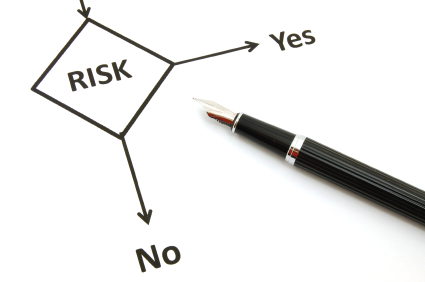
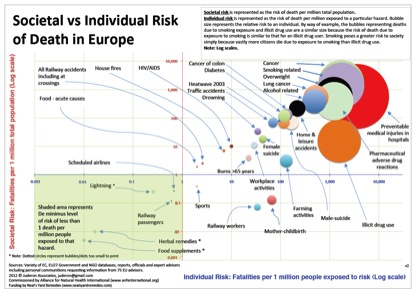
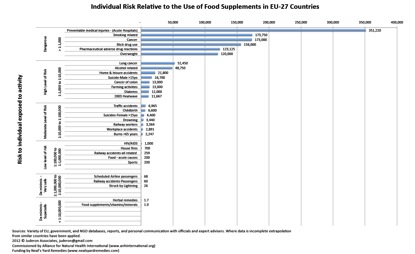
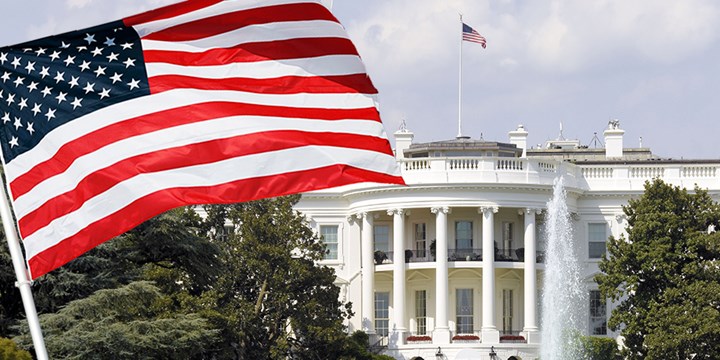


Comments
your voice counts
16 August 2012 at 3:03 pm
Has anyone thought this: if the criteria that is now applied to natural health remedies & supplements were to be applied to anything that Big Pharma produces Pharmacy shelves would be pretty much empty.Discuss!!!!
16 August 2012 at 4:50 pm
I have been taking many suppliments for years. 2 years ago I switched to a whole food diet and adding grass fed meat little by little. I am 69 and healthier than I have ever been.
16 July 2015 at 3:38 pm
I worked with 'asbestos' for 3 years at 16' talked to my aunt,a md she said a. m. a can't do any thing for you, she said eat your broccoli 2 times a week,raw is best don't boil it. I am 64 years old, the 3 younger and 3 older people I worked with all DEAD! CANCER! OF THE LUNGS! sssoooooo, I never felt better, last one died 17 years ago! not me, OPEN YOUR EYES, IT'S EASY TO SEE.I AM DIABETIC TYPE2 MY BP WAS 190/80 I BROUGHT IT 160. MD SAID YOU WILL NEVER GET OFF BP MEDS! BS WEN'T BACK 30 DAYS LATER. BP WAS BELOW NORMAL! I QUIT THE MEDS,A MONTH AGO, AND DID IT ALL NAUTRAL, I GET A BLOOD TEST 2 TIMES A YEAR, AND I JUCE RAW VEGIES, I FIGURE THAY WILL HAVE TO BEAT ME INTO THE GROUND WITH A SHOVEL. CHRIS MEGYERY ALGONQUIN ILL
Your voice counts
We welcome your comments and are very interested in your point of view, but we ask that you keep them relevant to the article, that they be civil and without commercial links. All comments are moderated prior to being published. We reserve the right to edit or not publish comments that we consider abusive or offensive.
There is extra content here from a third party provider. You will be unable to see this content unless you agree to allow Content Cookies. Cookie Preferences